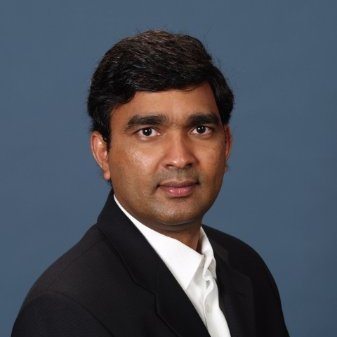We have been hearing a lot of buzz about the Internet of Things since the past few years. What comes next? Venkat Mattela, Founder, Chairman and CEO, Redpine Signals, Inc speaks with Dilin Anand from EFY.

Q. What according to you will be the next technological evolution after Internet of Things?
A. Artificial Intelligence (AI) is the next step after Internet of Things (IoT). With IoT you can control and monitor machines through the Internet, but it stops there. You still need to manually look at your phone to increase your room’s temperature or open an app to turn on your smart lighting system. With artificial intelligence, the machine itself will figure out when to turn on or modulate devices around you based on your previous interactions with them.
Q. What’s the flip side of having an AI capable of controlling and running computing infrastructure and machines?
A. This other side of this is that security and its issues will transform drastically. Today, humans are responsible for most hacks across the planet. However, the day we see artificial intelligence grow past the tipping point, will be they day you see hacks and cyberattacks happening 24 hours a day simultaneously from billions of connected devices.
Q. How do we ensure security in connected devices?
A. Using keys for protection is very important. We have a physically unclonable function that even I can’t break into because it is on based the physics of the chip. Even if you try to copy my design, the key will not be the same. FIPS 140-2 certification is very important for securing healthcare devices, and it is enforced through a chip. No one wants a wireless connection to be made in a hospital without any security because there is a lot of sensitive data in there.
Q. What according to you makes AI a tipping point in technological evolution?
A. In the next industrial revolution, the commodity is going to be AI. Any IoT enabled factory or industry can be quickly connected to an AI, which can then go through years of historic data to figure out trends that can drastically improve the efficiency and effectiveness of that production facility. The level of productivity increases or energy efficiency that can be brought in is unimaginable.
Q. What makes AI hard?
A. Algorithms are domain specific — there is no single set of algorithms for all AI problems. If you take human intelligence, it is not single dimensional. Computers have an arithmetic type of thinking, with pattern recognition and so on, whereas machines have just a single dimension and does not get distracted like humans. With numerous wireless options available today, the amount of raw data coming into an AI can be incredibly high.
Q. What according to you is a good blend of wireless technologies for IoT projects today?
A. Wi-Fi 2.4 and 5 GHz, Bluetooth Low Enerfy (BLE) 5.0, Bluetooth classic, ZigBee, thread, and a couple of other proprietary wireless technologies for provisioning purpose and 802.11p. This makes it octa-combo. The next one is a deca-combo which will have Global Navigation Satellite System (GNSS) as well as Long-Term Evolution (LTE) for IoT (not for voice). A modern IoT chip will have microcontroller, wireless connectivity, low power and security features are all located on the same die.
Q. Why do single chip and platform solutions end up being the most popular these days?
A. A typical IoT developer team is not like mobile phone design and developer teams. Mobile phone design and development teams have thousands of people, because they intend to sell millions of units. In IoT, at least for now, companies hope to sell tens of thousands of units and therefore the teams are small – so they cannot afford to work with multiple vendors. That’s the reason why we have platforms like WyzBee.
Q. What was your Eureka moment?
A. Once I connected with many of our customers to study what kind of problems they were having. They spent six months to integrate a driver. It’s my driver, and it is not really that difficult for me – so why is he spending six months to integrate it? That’s when I asked, “Why don’t I integrate and give it to you.”












